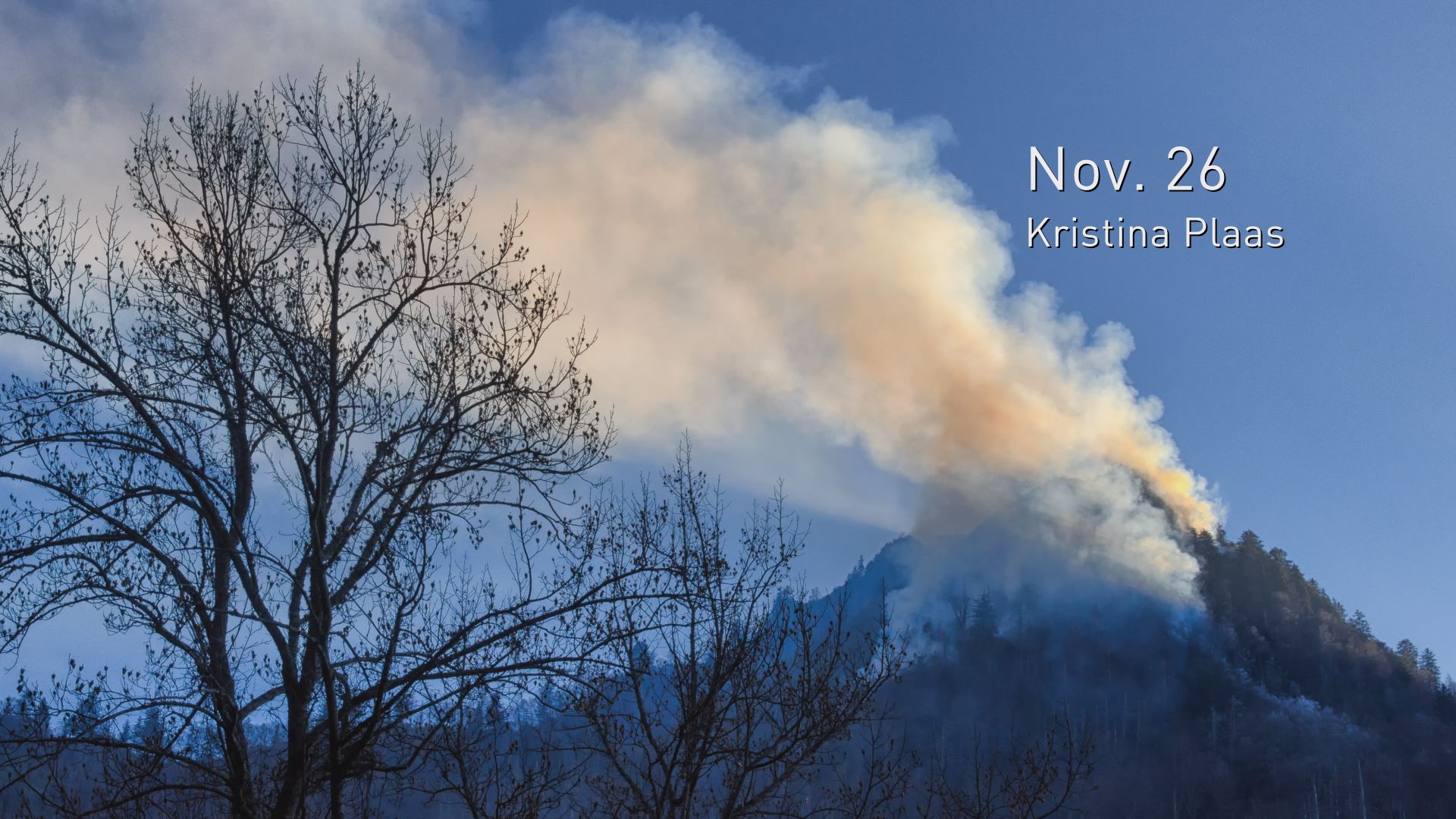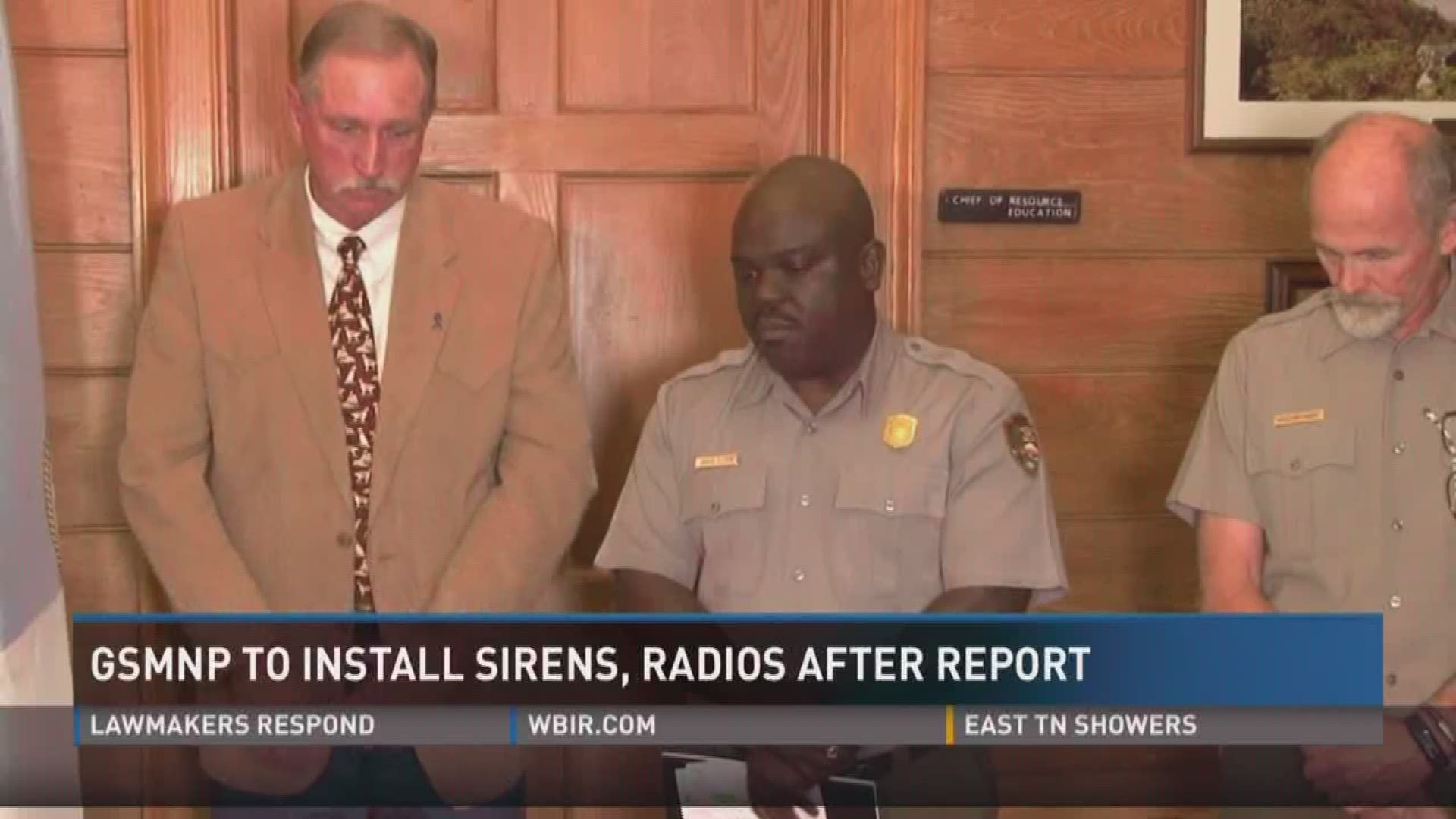Editor's note: This story was originally published on Aug. 31, 2017. It has been updated to include the city of Gatlinburg and Sevier County officials' response to the report. You can read the statement at the bottom of this story.
"Preparedness and planning weaknesses" hindered the response by Great Smoky Mountains National Park officials to the devastating Chimney Tops 2 fire last November, but there was no evidence of negligence on the park's behalf, according to an after-action report issued by the National Park Service.
The report, released Thursday, details the park officials' handling of the Chimney Tops 2 fire, which started at the top of the Chimney Tops trail in the evening of Wednesday, Nov. 23, 2016.
Five days later, the fire spread out of the park and into populated parts of Sevier County, including Gatlinburg and Pigeon Forge. Fourteen people died as a result of the fire, and more than 200 were injured. Officials estimate more than 2,500 buildings were damaged or destroyed.
The team that compiled the report emphasized the unprecedented nature of the Chimney Tops 2 fire.
"The fire wasn't really one that was typical of East Tennessee, but more akin to a wildfire experience in Southern California," said Bill Kaage, National Park Service Division of Fire and Aviation Chief, who lead the fire review team.
The fire burned 11,401 acres inside the park, and more than 17,000 acres total.
The report was released Thursday during a press conference at the GSMNP headquarters with park leaders and members of the review team.
It outlines the origins and growth of the fire beyond the park and identifies the factors that contributed to the growth and spread of the fire over the six days before it spread outside the park.
"Never in the history of this park or even the surrounding area had anyone seen the combination of severe drought, fire on the landscape, and extreme wind event," said Joe Stutler, the Chimney Tops 2 Fire Review team lead.
"We found no evidence of negligence by anyone in the park. They did the best they could with what was in their hard drive. No one had seen this before," Stutler said.
About The Report
The review was delegated in February to include a team of seven interagency fire experts to determine the facts leading up the devastation of the Chimney Tops 2 fire, as well as make recommendations to planning and operational management to reduce the chances of another incident happening in the future.
Officials emphasized Thursday that the report did not focus on blame, and found no negligence of anyone at the park.
When the report was completed in March, it was reviewed and compared to information from the park. A final draft was created in July and finished in early August. It was due 45 days after the last interview, but it was delayed because of other fires across the country.
The Department of Interior and NPS validated and reviewed the report.
Lessons Learned
Park officials said they learned they needed better communication between first responders, the park and police.
Officials said the park service will be working to upgrade GSMNP's radio communications system through a $2.5 million initiative funded through the Friends of the Smokies partnership.
The measure will also issue portable radios and protective equipment to seven neighboring fire departments. The park said it plans to refocus on vegetation management and remove dead and dying tree as well as participate in a broader review of the Sevier County fires with local, state and other federal officials.
Park officials said they need to remove dead and dying timber from urban areas to prevent fires from spreading in the future.
The fire jumped from top to top of ridge lines and was described as one similar to wildfires in Southern California. The fire was not typical to East Tennessee. Park officials said in the park's history, they had never seen the combination of dry weather, heat and fire that was experienced during the November 2016 wildfires.
Timeline
The report gives a detailed timeline of the park's response to the fire after it started on Wednesday, Nov. 23, the day before Thanksgiving. Park officials started ordering additional resources on Sunday. Fire was spotted outside the park for the first time at 4:45 p.m. Monday, and by 6 p.m., it had reached the Park Vista Hotel.
The report only covered the fire when it was inside the park boundaries. It didn't detail anything that happened after the fire spread outside the park.
What's Next?
GSMNP Superintendent Cassius Cash said they are working to incorporate the broad suggestions from the report at their park.
"It will not be a document that sits on a shelf and collects dust. It will be used to strengthen our program,' Cash said. "This is our home, these are our people."
The park is in discussions with the city and the county. There are several organizations working on after-action-reviews to work on seamless response plans throughout the area.

The Weather
During the news conference Thursday, park officials said their partnership with the National Weather Service is great and they provide "great data to understand the winds."
The NWS did not issue red flag warnings during the Chimney Tops 2 Fire because the winds were at 90 miles per hour. Red Flag Warnings alert land management agencies about the onset, or possible onset, of critical weather and fuel moisture conditions that could lead to rapid or dramatic increases in wildfire activity. As a result of that, officials said they will look a the "red flag" designation to see if it can be improved.
When asked if airdrops would have helped early on, park officials said water and retardant don't put fires out and only cool them down to reduce the size. If you look at the location, the park said clouds might have made a difference but airdrops would not have put it out.
Three Jobs At Once?
At the time of the fire, the Fire Manager Officer was service three positions, which is against National Park Service policy. He also served as the incident commander on Chimney Tops 2 and Duty Officer.
The Juveniles
When compiling the report, the National Park Service did not discuss the juveniles accused of starting the fire, and they did not talk to the juveniles during their review.
The GSMNP said they are purchasing emergency sirens to put near Sugarlands Visitor Center. They are not considering adding cell phone towers because it would be "incongruent for how you should treat a wilderness landscape."
Lawmakers React
U.S. Sen. Lamar Alexander responded Thursday to the NPS review:
“The fire that swept through Sevier County last November was heartbreaking, and I could not be more impressed and thankful for the hard work and bravery of our firefighters, police, and other first responders, and local, state and federal officials, who saved lives and have helped the area rebuild and recover," Alexander said in a statement.
“The bottom line is the Great Smoky Mountains National Park was not prepared for something this unprecedented. The review makes several useful recommendations to be better prepared for fires in the future, however the report also finds that many of those changes could not have prevented the tragedy that occurred in November 2016. Going forward, we will have to be prepared for fires we’ve never seen before in this part of the country.”
U.S. Sen. Bob Corker released the following statement on the NPS report:
“The people of Sevier County have shown incredible determination and resilience in the aftermath of this tragedy, and we owe it to them to ensure that the Great Smoky Mountains National Park is prepared to respond to an event of this nature in the future,” said Corker. “By outlining recommendations to enhance preparedness, this report is an important step in the right direction. I again want to applaud the first responders, as well as local, state and federal officials, who responded to this unprecedented emergency in a swift manner, and I thank them for the heroic work they did to save lives last November and for the work they continue to do to help the community rebuild.”
The review report will be located on the "Wildland Fire Lessons Learned" site.
UPDATE, Monday, Sept. 4, 2017: City of Gatlinburg and Sevier County officials responded to Thursday's Chimney Tops 2 fire review.
Both agencies sent out a joint release Monday, agreeing with many of the findings and recommendations, saying the Great Smoky Mountains National Park's recommended improvements to emergency management and changes to how park officials respond to future wildfires go hand-in-hand with what the city and county are doing to improve their systems and response.
The statement goes on to say both disagree with the characterization that fires of a similar magnitude will be the "new norm" for the region, saying the incident was the result of a "perfect storm" of a series of unfortunate occurrences such as an extreme drought, arson and unpredictably strong winds.
You can read the full response below:
"Officials with Sevier County and the City of Gatlinburg have studied the Chimney Tops 2 Fire Review as conducted by the National Park Service. The report is extremely thorough and helps to clarify the events leading up to the firestorm of November 28th, 2016. The report’s recommendations to strengthen the management and response to future wildfires within the Great Smoky Mountains National Park are excellent and dovetail with many of the emergency management improvements currently being implemented by Sevier County and the City of Gatlinburg. We look forward to working with the Great Smoky Mountains National Park to implement these recommendations and others that will be detailed in our separate after-action report.
We strongly disagree, however, with the characterization made in the Chimney Tops 2 Fire Review that fires of this magnitude are a “new norm” for our region. As stated in the report and by members of the review team, this fire was an unprecedented event caused by a “perfect storm” of extreme drought, hurricane-force winds, and arson. It was among the worst natural disasters in our nation’s history and no fire of this proportion has ever occurred in our region. Although we can’t know for certain whether an event of this degree will happen again, we are committed to continued cooperation among the county, cities, National Park Service, and local and state agencies to protect our citizens and visitors from any future natural disaster should it occur. "

